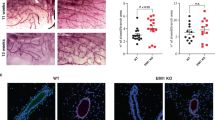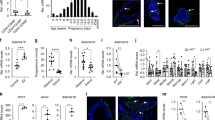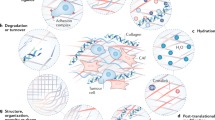Abstract
The matrix metalloproteinases (MMPs) are a family of zinc-dependent endopeptidases that play a key role in both normal and pathological processes involving tissue remodeling events. The expression of these proteolytic enzymes is highly regulated by a balance between extracel- lular matrix (ECM) deposition and its degradation, and is controlled by growth factors, cytokines, hormones, as well as interactions with the ECM macromolecules. Furthermore, the activity of the MMPs is regulated by their natural endogenous inhibitors, which are members of the tissue inhibitor of metalloproteinases (TIMP) family. In the normal mammary gland, MMPs are expressed during ductal development, lobulo-alveolar development in pregnancy and involution after lactation. Under pathological conditions, such as tumorigenesis, the dysregulated expres- sion of MMPs play a role in tumor initiation, progression and malignant conversion as well as facilitating invasion and metastasis of malignant cells through degradation of the ECM and basement membranes.
Similar content being viewed by others
Introduction
The extracellular matrix (ECM) is a complex three-dimensional network of fibrillar proteins and proteoglycans. ECM is not only essential as a structural support for maintaining the organization of tissues, but also plays a critical role in the control of cellular proliferation, differentiation and viability1. Thus, alterations in the integrity of the ECM can regulate these processes. Proteolysis of the ECM is one of the most important events in normal physiological processes such as tissue morphogenesis, angiogenesis, trophoblast implantation, wound healing and involution of the uterus, prostate and mammary gland. On the other hand, an excess of ECM degradation may led to pathological situations including arthritis and neoplasia1, 2.
Although a number of proteases that can cleave ECM molecules have been characterized, the matrix metalloproteinases (MMPs) are the main responsible enzymes for the breakdown of the ECM. MMPs are a family of zinc-dependent endopeptidases, which collectively are able to degrade all components of ECM3. Thus, it follows that the activity of MMPs members has to be highly regulated. There are different levels of regulation that ensure a precise expression of protease activity, including transcriptional regulation by growth factors and cytokines, post-translational regulation through the activation of the secreted zymogens and inhibition by natural inhibitors, which are the members of the tissue inhibitors of metalloproteinases or TIMPs. These levels of regulation allow the maintenance of the connective tissue homeostasis, as well as the rapid and localized tissue remodeling that occurs during many normal physiological processes. However, when these stringent regulatory mechanisms are lost, abnormal degradation or deposition of ECM promotes many pathological conditions such as cancer invasion, metastasis, rheumatoid arthritis, atherosclerosis and multiple sclerosis4,5,6,7.
The MMP family: structure, activity and regulation
All MMPs are neutral pH acting endopeptidases that require calcium as well as a Zn2+ ion in the active site for their activity. Most of them are secreted as soluble latent precursors that need to be activated through proteolytic cleavage. Generally, all the members of the MMPs family share the same protein domain structure consisting of a signal peptide required for transport into the endoplasmic reticulum, a propeptide, a catalytic domain, a hinge or linker region and, except for matrilysin, a hemopexin-like domain. Gelatinases A and B contain an insertion with three fibronectin type II-like repeats within the catalytic domain, and the membrane-type MMPs (MT-MMPs) contain a transmembrane domain after the hemopexin homology domain at their C-terminal end (Fig 1)7.
Domain structure of the MMP family members. Catalytic, domain containing the active and metal binding sites; F, furin recognition domain; FN domain with homology to the collagen binding region of fibronectin; H, “hinge” linking region; Hemopexin, C-terminal domain with homology to hemopexin; Pre, signal peptide region; Pro, propeptide; TM, Transmembrane domain. Modified from7
The latency of MMPs is maintained by a highly conserved PRCGXPD amino acid sequence present in the propeptide through the cysteine switch8. In this mechanism, the unpaired cysteine residue present in this conserved sequence, interacts with the Zn2+ in the active site, blocking its activity. Activation of proteolytic activity of the MMPs occurs when the propeptide is released through proteolysis by other proteases as plasmin, mast cell proteinases or other members of the MMP family. The MT-MMP subfamily and stromelysin-3 have a nine-residue insertion between the propeptide and the catalytic domain which comprises the consensus sequence RxK/RR that is recognized by the Golgi-associated serine proteinase furin, so that they are activated intracellularly and secreted in active form9
The catalytic domain has the conserved sequence VAAHEXGHXXGXXH in which the three histidine residues bind the Zn2+ atom in the active centre. The hemopexin-like domain in the C-terminal is essential for the interaction between MMPs and substrates, and may mediate other processes, such as cell surface binding, activation of the proenzyme and has interactions between the inactive form of the gelatinase B and TIMP-1, and gelatinase A and TIMP-210. The 180 residue insert in gelatinases is homologous to the collagen-binding region of fibronectin and is responsible of the substrate binding capabilities of the gelatinases.
At present, 17 members of the MMP family have been identified. These can be divided into five major subfamilies based on their substrate specificity and protein structure features: collagenases, gelatinases, stromelysins, membrane type-metalloproteinases (MT-MMPs) and other MMPs (Tab 1)11.
The MMP subfamily of collagenases consist of interstitial collagenase (MMP-1), collagenase-3 (MMP-13), neutrophil collagenase (MMP-8) and Xenopus collagenase-4 (MMP-18). These four enzymes cleave intact fibrillar collagens of types I, II and III at a single site in the triple helical α- chains. Once collagenases cleave the fibrillar collagens, the fragments lose their structure and become susceptible to degradation by other proteases.
The stromelysin subfamily is formed by three related proteases, stromelysin-1 (MMP-3) -2 (MMP-10) and -3 (MMP-11). They degrade a broad spectrum of ECM macromolecules, as fibronectin, laminin, vitronectin, aggrecan and the noncollagenous domain of type IV collagen. Many MMPs degrade the serpin al-antiplasmin, potentiating the activity of serine proteases such as urokinase.
The gelatinases or type IV collagenase group comprises two related enzymes, gelatinase A (MMP-2) and gelatinase B (MMP-9). Both of them bind and degrade denatured collagens, basement membrane type IV collagen, types V, VII and X collagens, elastin, vitronectin, fibronectin, laminin, aggrecan and galectin. Because of their spectrum of target molecules and capacity to breakdown the basement membrane, these two MMPs may play a key role in the spreading of invasive cells from primary tumors giving raise to metastasis to secondary focus.
The MT-MMPs are present at the cell surface owing to their transmembrane domain. Four members of the MT-MMP subfamily have been identified, MT1-MMP to MT4-MMP (MMP-14, -15, -16 and -17, respectively). MT1-MMP degrades collagens I, II and III, fibronectin and vitronectin and activates other MMPs such as progelatinase A and proMMP-13. MT2-MMP also can activate progelatinase A.
Matrilysin (MMP-7), macrophage metalloelastase (MMP-12) and the most recently described MMP-19 and enamelysin (MMP-20) have unique features that make them different from other MMPs. Matrilysin lacks the hemopexin-like domain common to all others MMPs, but can cleave a number of MMPs substrates including laminin, gelatins, collagen IV, fibronectin, elastin, entactin and tenascin.
The expression of the genes expressing MMPs is modulated by a great number of cytokines, growth factors and other signal transduction regulators and the way of regulation is highly dependent on the tissue/cell type and is different among the MMPs family members. In general, inflammatory cytokines and growth factors, including IL-1, TNF-α, EGF and PDGF, up-regulates MMPs expression, whereas transforming growth factor-β1 (TGF-β1) promotes ECM deposition by down-regulating the production of MMPs. TGF-β1 regulates MMP genes through regulation of the expression of the Fos/Jun proto-oncogene gene family members3.
The next level in the regulation of MMP activity is the activation of the proMMPs. With the exception of the furin-activated MMPs, most of the MMPs are produced as inactive proenzymes, which require the removal of their propeptide for proteolytic activity. In vitro this is achieved by disruption of the cysteine switch by organomer-curials or chaotropic agents, followed by autoproteolysis of the propeptide. In vivo the activation of the MMPs requires the presence of other proteases for removal of the propeptide and, in some cases, the activation of a proteolytic cascade. Plasmin, cathepsin B, elastase and trypsin can cleave the propeptide of MMPs. Moreover, activated MMPs can activate other proMMPs. There is also a cell-membrane linked activation mechanism for several MMPs12. In this model, the active MT1-MMP expressed in the surface of certain cells, acts as a receptor for TIMP-2 and in a further step, the complex formed by MT1-MMP/TIMP-2 is able to bind progelatinase A, interacting through its hemopexin domain. Then, progelatinase A can be cleaved by MT1-MMP, resulting in the release of the active form of gelatinase A.
Finally, the activity of the MMPs is also controlled by TIMPs3. The four TIMPs known at present are secreted extracellularly and inhibit the activity of MMPs by tight binding non-covalent complexes in a 1:1 stoichiometric manner13. Thus, the net proteolytic activity in the ECM environment will depend upon the balance between active MMPs and TIMPs, and imbalances in one way or other will determine net degrading ECM activity or ECM deposition.
Expression of MMPs in mammary gland
The mammary gland is an ideal model to study the role of proteinases in tissue remodeling, because it is one of the few organs in the adult that undergoes cycles of growth, differentiation and morphogenesis throughout development. It is clear that the MMPs play a key role in the ECM remodeling that happens during ductal development, lobulo-alveolar development during pregnancy and involution in the mammary gland. The MMPs are suppressed during lactation, compared with pregnancy, but are highly upregulated during involution. Among the MMPs expressed in this stages are stromelysin-1, stromelysin-3 and gelatinase A14, 15.
MMPs are expressed during ductal morphogenesis initiated by estrogen during puberty. Overexpression of stromelysin enhances branching morphogenesis14, 17, while overexpression of TIMP-1 or a null mutation in the stromelysin-1 gene suppresses this process [unpublished observation]. During pregnancy, the mammary gland gets ready for the lactation period through lobulo-alveolar morphogenesis, where stromelysin-1 is the main MMP expressed in the stromal cells of the mammary gland. In contrast to ductal development, alveolar development is inhibited by overexpression of stromelysin, which induces unscheduled apoptosis18. During lactation, β-casein is expressed at high levels, whereas mRNAs for proteinases are hardly detectable. The transition from lactating to an involuting gland is characterized by three major events. First, during lactation and the early stages of involution, ECM-degrading proteinases are expressed at low level14, 15. The time course of induction of proteinases correlates with loss of expression of β-casein during involution. However, 3-4 d after weaning, stromelysin-1, -3, gelatinase A and collagenase-3, together with the tissue-type plasminogen activator and urokinase-type plasminogen activator, are upregulated15, 16. This expression reaches a maximum around day 5-6 and remains high for at least 10 days into involution. It is in the involution period, when the basement membrane is degraded, that the mammary epithelial cells lose the capacity to express milk protein genes and are shed in the lumina, where they die. Finally the lactating structures collapse and most epithelial cells are replaced by adipose tissue.
In the normal process of mammary gland involution, the expression of stromelysin-1 is temporally and spatially controlled; however when the expression of stromelysin is misregulated, mammary gland function is profoundly affected as in the case of transgenic mice in which rat stromelysin-1 is overexpressed in epithelial cells14, 17. In these transgenic models, stromelysin-1 is highly expressed in the stromal fibroblast surrounding the ducts and fibroblast, but not in the myoepithelial cells of the intralobular unit of the mammary gland in virgin, mid-pregnant, and involuting glands14. The pattern of expression is similar in both transgenic and normal mice, except that in the mid-pregnant transgenic mice the expression of the stromelysin-1 mRNA extends further into the stroma, thereby resembling the pattern seen during involution of a normal mammary gland, which includes degradation of the basement membrane. Overexpression of the stromelysin-1 results not only in premature branching morphogenesis, differentiation and hyperproliferation, but with time these transgenic mice are predisposed to forming mammary gland tumors7, 19. The introduction of stromelysin-1 into functionally normal mouse mammary epithelial cells rapidly and irreversibly induces epithelial-to-mesenchymal transition, acquisition of an invasive phenotype20 and renders them tumorigenic [unpublished observation]. Many malignant breast tumors cells in human and mice overexpress stromelysin-1 and use it for ECM, and basement membrane invasion7. Therefore, the inappropriate expression of stromelysin-1 results in profound changes in the stromal-epithelial interactions in the mammary gland and can profoundly affect gland function and promote tumor formation.
Abbreviations
- MMP:
-
matrix metalloproteinase
- ECM:
-
extracellular matrix
- TIMP:
-
tissue inhibitor of metalloproteinases
- MT-MMP:
-
membrane-type MMP
- IL:
-
inter-leukin
- TNF:
-
tumor necrosis factor
- EGF:
-
epidermal growth factor
- PDGF:
-
platelet derived growth factor
- TGF:
-
transforming growth factor.
References
Werb Z . ECM and cell surface proteolysis: Regulating cellular ecology. Cell 1997; 91:439–42.
Stetler-Stevenson WG, Aznovoorian S, Liotta LA . Tumor cell interactions with the extracellular matrix during invasion and metastasis. Annu Rev Cell Biol 1993; 9:541–73.
Birkedal-Hansen H, Moore WG, Bodden MK et al. Matrix metalloproteinases: A review. Crit Rev Oral Biol Med 1993; 4:197–250.
Basset P, Okada A, Chenard MP et al. Matrix metalloproteinases as stromal effectors of human carcinoma progression: Therapeutic implications. Matrix Biol 1997; 15:535–41.
Halpert I, Sires U, Roby J et al. Matrilysin is expressed by lipid-laden macrophages at sites of potential rupture in atherosclerotic lesions and localizes to areas of versican deposition, a proteoglycan substrate for the enzyme. Proc Natl Acad Sci USA 1996; 93:9748–53.
Chandler S, Miller KM, Clements JM et al. Matrix metalloproteinases, tumor necrosis factor and multiple sclerosis: an overview. J Neuroimmunol 1997; 72:155–61.
Coussens LM, Werb Z . Matrix metalloproteinases and the development of cancer. Chem Biol 1996; 3:895–904.
Springman EB, Angleton EL, Birkedal-Hansen H, Van Wart HE . Multiple modes of activation of latent human fibroblast collagenase: Evidence for the role of a Cys73 active-site zinc complex in latency and a “cysteine switch” mechanism for activation. Proc Natl Acad Sci USA 1990; 87:364–8.
Pei D, Weiss SJ . Furin-dependent intracellular activation of the human stromelysin-3 zymogen. Nature 1995; 375:244–7.
Murphy G, Knauper V . Relating matrix metalloproteinase structure to function: why the “hemopexin” domain? Matrix Biol 1997; 15:511–8.
Sternlicht M, Werb Z . In: Kreis T, Vale R eds Guidebook to the extracellular matrix and adhesion proteins, 2nd ed. Oxford University Press: Oxford, 1998; in press.
Basbaum C, Werb Z . Focalized proteolysis and temporal regulation of extracellular matrix degradation at the cell surface. Curr Opin Cell Biol 1996; 8:731–8.
Douglas D, Shi E, Sang Q . Computational sequence analysis of the tisue inhibitor of metallo- proteinase family. J Prot Chem 1997; 16:237–55.
Witty JP, Wright JH, Matrisian L . Matrix metalloproteinases are expressed during ductal and alveolar mammary morphogenesis, and misregulation of stromelysin-1 in transgenic mice induces unscheduled alveolar development. Mol Biol Cell 1995; 6:1287–303.
Talhouk RS, Bissell MJ, Werb Z . Coordinated expression of extracellular matrix-degrading pro- teinases and their inhibitors regulates mammary epithelial function during involution. J Cell Biol 1992; 118:1271–82.
Lund LR, Romer J, Thomasset N et al. Two distinct phases of apoptosis in mammary gland involution: Proteinase-independent and -dependent pathways. Development 1996; 122:181–93.
Sympson CJ, Talhouk RS, Alexander CM, Chin JR, Clift SM, Bissell MJ, Werb Z . Targeted expression of stromelysin-1 in mammary gland provides evidence for a role of proteinases in branching morphogenesis and the requirement for an intact basement membrane for tissue- specific gene expression. J Cell Biol 1994; 125:681–93.
Alexander CM, Howard EW, Bissell MJ, Werb Z . Rescue of epithelial cell apoptosis and entactin degradation by a TIMP-1 transgene. J Cell Biol 1996; 135:1669–77.
Sympson CJ, Bissell MJ, Werb Z . Mammary gland tumor formation in transgenic mice overex- pressing stromelysin-1. Sem Cancer Biol 1997; 6:159–63.
Lochter A, Srebow A, Sympson CJ, Terracio N, Werb Z, Bissell MJ . Misregulation of stromelysin-1 expression in mouse mammary tumor cells accompanies acquisition of stromelysin-l-dependent invasive properties. J Biol Chem 1997; 272:5007–15.
Acknowledgements
This work was supported by funds from the National Cancer Institute (CA57621 and CA58207) and a fellowship from the Ministerio de Educacion de Espana.
Author information
Authors and Affiliations
Corresponding author
Rights and permissions
About this article
Cite this article
Uria, J., Werb, Z. Matrix metalloproteinases and their expression in mammary gland. Cell Res 8, 187–194 (1998). https://doi.org/10.1038/cr.1998.19
Published:
Issue Date:
DOI: https://doi.org/10.1038/cr.1998.19
Keywords
This article is cited by
-
Evidence for existence of insulin-like factor 3 (INSL3) hormone-receptor system in the ovarian corpus luteum and extra-ovarian reproductive organs during pregnancy in goats
Cell and Tissue Research (2021)
-
MicroRNA roles in signalling during lactation: an insight from differential expression, time course and pathway analyses of deep sequence data
Scientific Reports (2017)
-
Thyroid hormone enhanced human hepatoma cell motility involves brain-specific serine protease 4 activation via ERK signaling
Molecular Cancer (2014)
-
Thyroid hormone-induced cell-cell interactions are required for the development of adult intestinal stem cells
Cell & Bioscience (2013)
-
Constitutive activation of JAK2 in mammary epithelium elevates Stat5 signalling, promotes alveologenesis and resistance to cell death, and contributes to tumourigenesis
Cell Death & Differentiation (2012)




